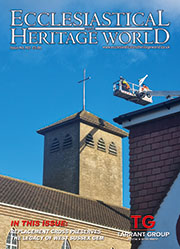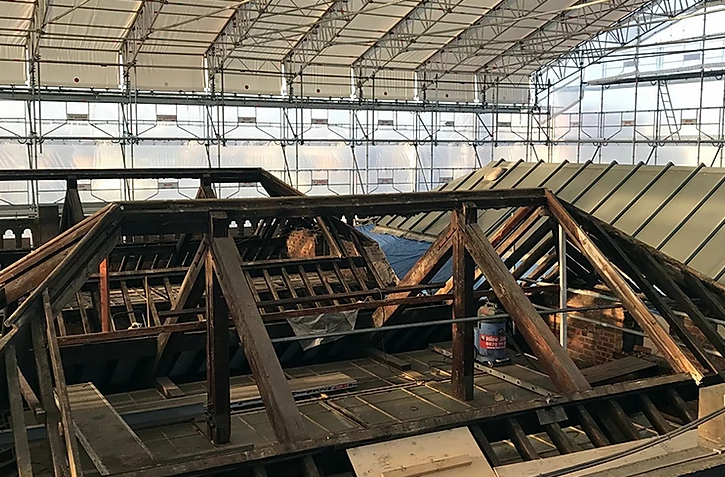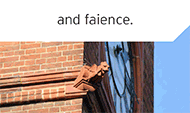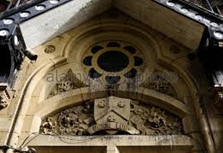Heritage Roofing
Heritage roofing - maintaining our iconic buildings
The UK is home to some of the most iconic buildings in the world, from stunning churches and cathedrals to historic stately homes. Each and every one of these remarkable feats of architecture requires regular maintenance to ensure they remain in the very best condition, allowing them to be enjoyed for generations.
Cathedral Care
Restoration and upkeep of cathedrals
There are some 42 Anglican cathedrals in the UK, not to mention 20 or so Catholic cathedrals. Cathedrals form the most important collection of historic buildings in England. The largest and most ancient are internationally famous, the smallest are usually among the most significant buildings in their region and even the most recent are architectural masterpieces.
Master Craftsmen
Championing our heritage with modern craftsmanship
Twenty years ago, English Heritage (now Historic England) published its first-ever Register of Buildings at Risk across England, which featured nearly 2,000 buildings and monuments that were ‘neglected, broken and unloved’. Recently Historic England was delighted to announce that over two-thirds of those buildings were now safe, in both urban and rural areas right across the country.
Traditional Lime
Lime: it’s better for buildings – and for the environment
It is now fairly well known that cement is not good for old buildings and that lime mortar should be used. But why? What are the advantages and what are the disadvantages? In order to begin to answer those questions it is necessary to understand the nature of traditional building, the process by which buildings used to be built, and how it differs from modern construction, the process by which we build today.
Audio Visual
Audio visual equipment in church buildings
This guidance is issued by the Church Buildings Council under section 55(1)(d) of the Dioceses, Mission and Pastoral Measure 2007. As it is statutory guidance, it must be considered with great care. The standards of good practice set out in the guidance should not be departed from unless the departure is justified by reasons that are spelled out clearly, logically and convincingly.
Read More...
CRE Events
Exhibitors enthuse over the CRE experience
By 4pm on the first day of CRE 24 at the Marshall Arena in Milton Keynes, exhibitors Chris and Kim Dunphy had already had so many helpful and detailed conversations with visitors that they were “completely talked out”.
Insurance
You need to ensure that reasonable precautions are in place at your church to keep it safe for those who use it. To do this, you need to think about what might cause harm to people.
You will then need to decide if the precautions already in place are adequate. If they are not, you may need to identify further action to prevent any danger. When done formally, this is known as a risk assessment.
Church Maintenance
Church maintenance and repair: Calendar of Care
Just as prevention is always better than cure, maintenance is preferable to major repairs. But, such repairs may not always be avoidable. Church Care offers a monthly guide in our coming issues Starting in Spring
We can help you understand the common problems and areas that need your special attention, and give you tips for regular maintenance schemes.
Pest Control
Michael Palin warns of pest threat to churches
Michael Palin is supporting the future of the UK’s historic churches and chapels with a voiceover for a new animated film. The 80 second animation, produced for the National Churches Trust, highlights why churches are some of the nation’s best loved buildings.
Town Halls
The history of the great Victorian Town Halls of Northern England
From industrial squalor to civic pride, the story behind some of the most impressive buildings of the North involve a unique mix of economics, grand designs and noble sentiments within communities.
Lead Roofing
Lead is one of the oldest materials in the roofing industry and is still commonly used throughout the world today.
Lead roofing is a traditional roofing method which has been used in the industry for hundreds of years, and is therefore proven to be extremely reliable. Lead roofing, and sand-cast lead, in particular is ideal for old buildings such as churches or historical renovations, whereas milled lead roofing is a mass-produced alternative, used for precision and accuracy in homes and commercial buildings alike.
Lightning Protection
When lightning strikes are you protected against this act of God?
The issue of lightning protection in churches is one that has exercised this publication for many years. In this four-part series of spotlights on the issue we will be revisiting various aspects of the subject, beginning with an overview of current thinking.
SEARCH OUR DIRECTORY
Renaissance Dutch glass is protected from the 21st century
 St Clement’s Church is at the centre of Outwell village in the Fens on the Norfolk-Cambridgeshire border. It has been described as a treasure-house of unique medieval sculptures and beautiful stained glass.
St Clement’s Church is at the centre of Outwell village in the Fens on the Norfolk-Cambridgeshire border. It has been described as a treasure-house of unique medieval sculptures and beautiful stained glass.
In the east elevation of the Lady Chapel, or Beaupré Chapel, is a large transom window with a large tracery of 24 lights containing highly-detailed and technicoloured stained glass representations of saints – both local and international – heraldry and decorative motifs.
Ancient and modern: technology and craftsmanship come together to create ‘splendid balcony’
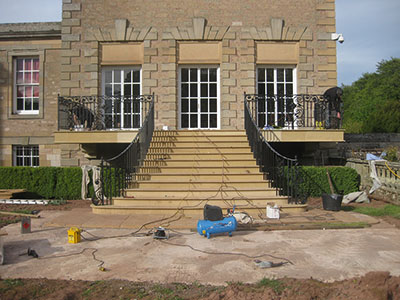 A large, cantilevered balcony is an exacting thing to build, particularly in stone, so when specialist surveyors Smith & Garratt were given the task of enhancing the galleries in the south wing of Marchmont House, an A-listed Palladian mansion in the Scottish Borders – to provide visitors with an outdoor dining space and to improve access to the west garden – they were keen to explain how it was achieved. This is their account of the build.
A large, cantilevered balcony is an exacting thing to build, particularly in stone, so when specialist surveyors Smith & Garratt were given the task of enhancing the galleries in the south wing of Marchmont House, an A-listed Palladian mansion in the Scottish Borders – to provide visitors with an outdoor dining space and to improve access to the west garden – they were keen to explain how it was achieved. This is their account of the build.
Our solution was a 10’ x 30’ balcony providing room for three tables of eight, accessed on the level from the main gallery through three pairs of French windows, with broad sweeping steps down to a garden terrace. Smith & Garratt designed, obtained consents for, and delivered this splendid balcony.
ISCVE announces launch of Voice Alarm Standards
 The Institute of Sound, Communications and Visual Engineers (ISCVE) is pleased to announce the launch of its Voice Alarm Standards manifesto. The new manifesto has been borne out of research carried out by the Institute following a detailed questionnaire of more than 100 international companies working within the voice alarm sector.
The Institute of Sound, Communications and Visual Engineers (ISCVE) is pleased to announce the launch of its Voice Alarm Standards manifesto. The new manifesto has been borne out of research carried out by the Institute following a detailed questionnaire of more than 100 international companies working within the voice alarm sector.
There are currently no laws requiring voice alarm systems to be installed anywhere in the UK. Fire detection in general must be ‘appropriate’ but this isn’t defined. A licensing authority can insist on a voice alarm system as part of the planning permission requirements, but mainly the take-up is ‘where it makes sense.’
Horizon help to restore Nottingham Council House clock
 Horizon Specialist Contracting’s Steeplejack division were recently contracted to help undertake the repairs and restoring of the Nottingham Council House clock for the first time in 25 years.
Horizon Specialist Contracting’s Steeplejack division were recently contracted to help undertake the repairs and restoring of the Nottingham Council House clock for the first time in 25 years.
Standing at 42.7m a team of three Steeplejack engineers over a period of three weeks abseiled from the roof of Nottingham’s Council House to replace sections of steel on the clock face which had rusted and rotten over the years.
Visitors behaving badly: 91% of heritage attractions suffer challenging behaviour during Covid-19
 As many heritage attractions prepare to reopen on 17 May, research commissioned by specialist heritage insurer, Ecclesiastical, has revealed nine in 10 (91%) heritage attractions in the UK have experienced challenging behaviour from visitors since Covid-19.
As many heritage attractions prepare to reopen on 17 May, research commissioned by specialist heritage insurer, Ecclesiastical, has revealed nine in 10 (91%) heritage attractions in the UK have experienced challenging behaviour from visitors since Covid-19.
Since the first lockdown in March 2020, Britain’s museums, art galleries, theatres, stately homes and castles have had to cope with difficult behaviour as visitors have refused to follow social distancing (33%), refused to wear masks in designated areas (31%) and have not followed instructions (26%).
Restoration of Birmingham Botanical Gardens’ historic bandstand complete
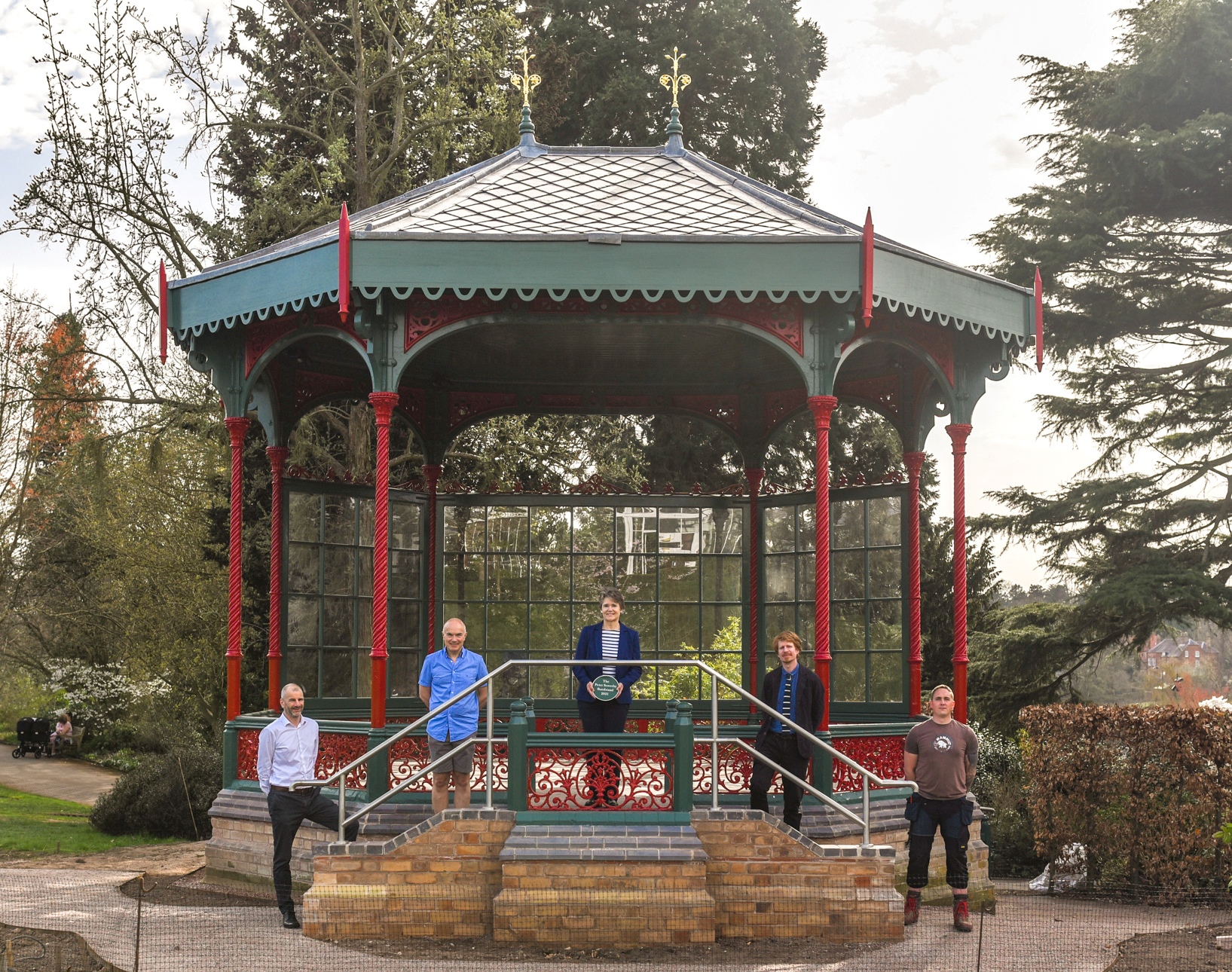 The historic, Grade II listed bandstand at the Birmingham Botanical Gardens has been restored to its former 1874 glory after six months of painstaking work by conservation specialists.
The historic, Grade II listed bandstand at the Birmingham Botanical Gardens has been restored to its former 1874 glory after six months of painstaking work by conservation specialists.
The local landmark, which sits in the Gardens’ Grade II* listed 15-acre grounds in Edgbaston, has been completely transformed, following a 12-month fundraising campaign that raised £138,000.
The missing stained glass at the heart of our Victorian heritage has been replaced
 The RHN is celebrating the restoration of its beautiful stained glass windows in its Victorian Assembly Room. The original windows, designed in the 1870s, were destroyed in bombing raids in the Second World War. After the war limited funds meant that the broken windows were replaced with plain glass. In recent years the windows and frames had become too fragile and were boarded up.
The RHN is celebrating the restoration of its beautiful stained glass windows in its Victorian Assembly Room. The original windows, designed in the 1870s, were destroyed in bombing raids in the Second World War. After the war limited funds meant that the broken windows were replaced with plain glass. In recent years the windows and frames had become too fragile and were boarded up.
Using a single black-and-white archive image of the original windows, Chapel Studio worked with the Heritage of London Trust (who gave a start-up grant) to design new windows in keeping with the originals. The work cost £230k, which was raised in record time entirely through donations from generous individuals and organisations.
ISCVEx rescheduled to March 2022
 The Institute of Sound, Communications and Visual Engineers (ISCVE) is re-scheduling its annual exhibition and seminar programme for 2021 to March 2022. Already postponed from March 2021 due to the Covid-19 lockdown, the ISCVEx committee, responsible for planning and organising the event for ISCVE announced its decision to reschedule to next year at its recent annual AGM and Members’ Day.
The Institute of Sound, Communications and Visual Engineers (ISCVE) is re-scheduling its annual exhibition and seminar programme for 2021 to March 2022. Already postponed from March 2021 due to the Covid-19 lockdown, the ISCVEx committee, responsible for planning and organising the event for ISCVE announced its decision to reschedule to next year at its recent annual AGM and Members’ Day.
“With the level of uncertainty surrounding the timescale of vaccinations combined with mixed confidence and appetite for attending events, we feel the pragmatic approach is to take ISCVEx off the calendar for 2021 and reschedule for March 2022. This allows visitors and exhibitors to plan ahead in order to attend, what we are confident will be, the best ever ISCVEx event, with our expanding AV presence as well as our core sound roots,” confirms Helen Goddard, President, ISCVE.
Yorkshire brickmaker’s award highlights fight against slavery
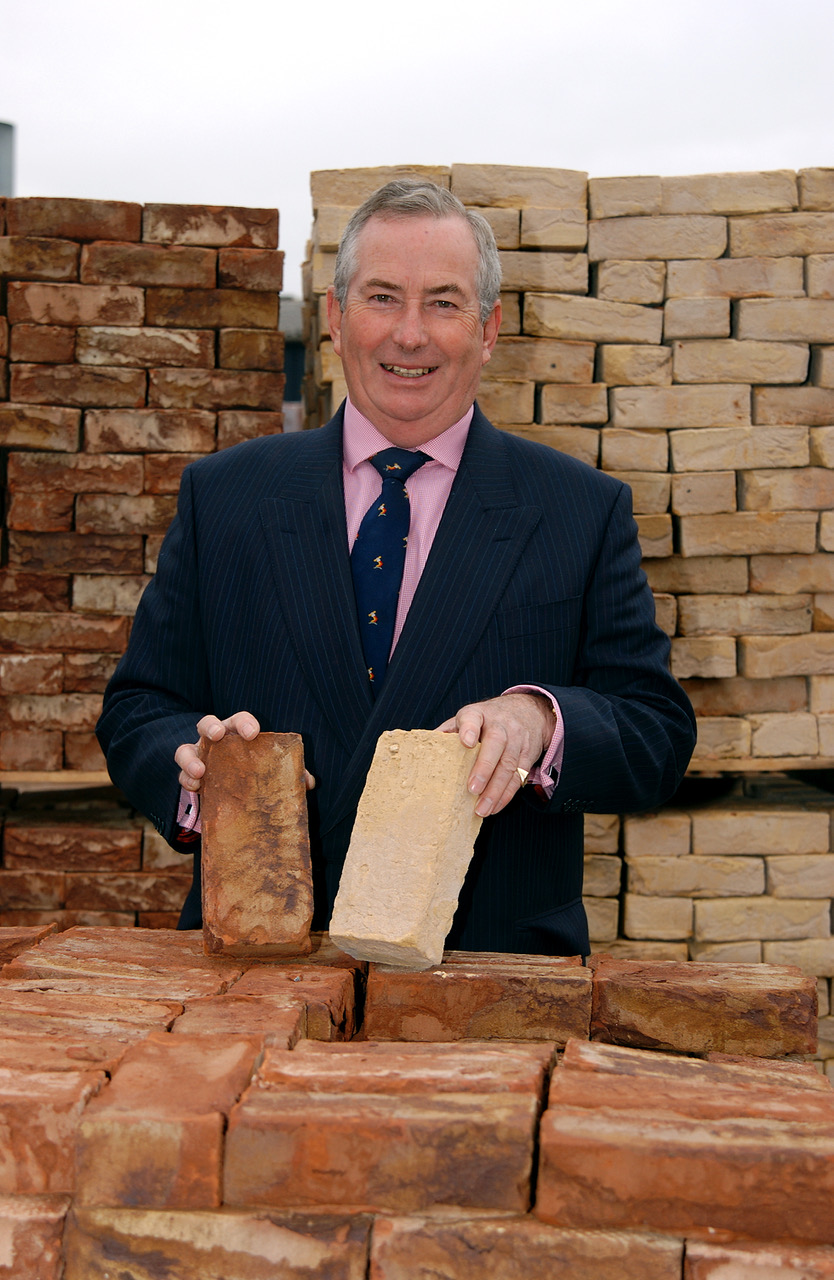 A leading Yorkshire brickmaker has been honoured for its high ethical standards - as the brick industry fights back against the widespread use of child labour and slavery in South East Asia.
A leading Yorkshire brickmaker has been honoured for its high ethical standards - as the brick industry fights back against the widespread use of child labour and slavery in South East Asia.
The Easingwold-based York Handmade Brick Company, the largest independent brickmaker in the north of England, has been awarded the brand-new Brickmakers Quality Charter to underline its moral standards and green credentials.
The award comes from the Brick Development Association, the trade association for the UK’s brick industry.
Protecting places of worship during the pandemic
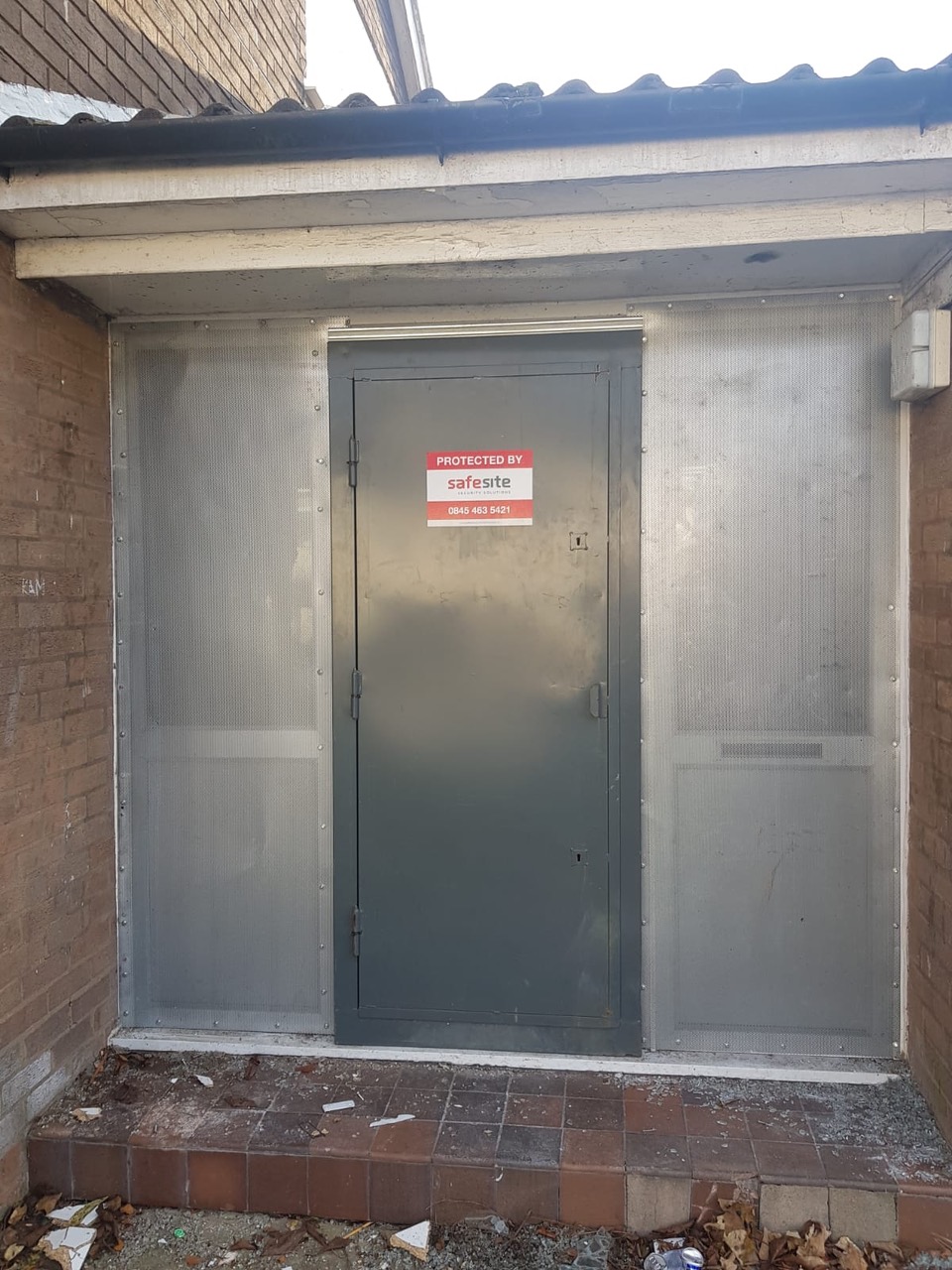 Places of worship were among the list of buildings closed in early attempts to slow the spread of coronavirus, during the first national lockdown in March 2020. Initially, instructions for clergy permitted those who lived nearby to continue to use their church buildings, for prayer and to celebrate the Eucharist.
Places of worship were among the list of buildings closed in early attempts to slow the spread of coronavirus, during the first national lockdown in March 2020. Initially, instructions for clergy permitted those who lived nearby to continue to use their church buildings, for prayer and to celebrate the Eucharist.
However, shortly after the Prime Minister’s announcement on 23 March, the Archbishops of Westminster and Canterbury wrote to all clergy and included them in the widespread closure, stating that “Our church buildings must now be closed not only for public worship, but for private prayer as well, and this includes the priest or lay person offering prayer in church on their own.”
Temporary renewals implemented for lightning conductor engineer and steeplejack CSCS cards
 The Association of Technical Lightning & Access Specialists’ (ATLAS) Council has voted in favour of temporarily amending the standard CSCS card renewal requirements for its sector, due to coronavirus severely restricting access to training. This has meant the suspension of the requirement for an Anchors for Steeplejacks and/or Working at Height for Lightning Conductor Engineer course in order to renew blue or gold Steeplejack and/or Lightning Conductor Engineer CSCS cards. As a result, on a temporary basis, the Health, Safety & Environment Specialist Work at Height Test will be sufficient to renew a CSCS card, but this will be valid for one year only.
The Association of Technical Lightning & Access Specialists’ (ATLAS) Council has voted in favour of temporarily amending the standard CSCS card renewal requirements for its sector, due to coronavirus severely restricting access to training. This has meant the suspension of the requirement for an Anchors for Steeplejacks and/or Working at Height for Lightning Conductor Engineer course in order to renew blue or gold Steeplejack and/or Lightning Conductor Engineer CSCS cards. As a result, on a temporary basis, the Health, Safety & Environment Specialist Work at Height Test will be sufficient to renew a CSCS card, but this will be valid for one year only.
John Taylor & Co - founders of the world's finest bells
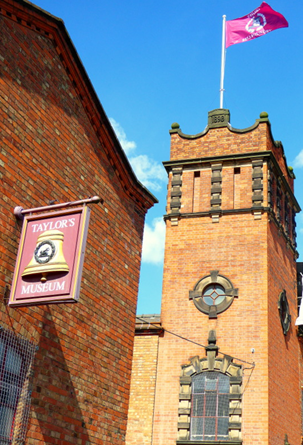 John Taylor & Co. continues a line of bell founding which has been unbroken since the middle of the 14th Century when Johannes de Stafford was active only 10 miles from the site of the present foundry.
John Taylor & Co. continues a line of bell founding which has been unbroken since the middle of the 14th Century when Johannes de Stafford was active only 10 miles from the site of the present foundry.
From 1784 the business was operated by members of the Taylor family, and in 1839 it moved to Loughborough as a condition of a contract to recast the Parish Church bells. The Foundry was moved to its present site in Loughborough in 1859 and is now proud to operate the largest bell foundry in the world.
Ducie Street Warehouse shortlisted for AJ Retrofit Awards 2021
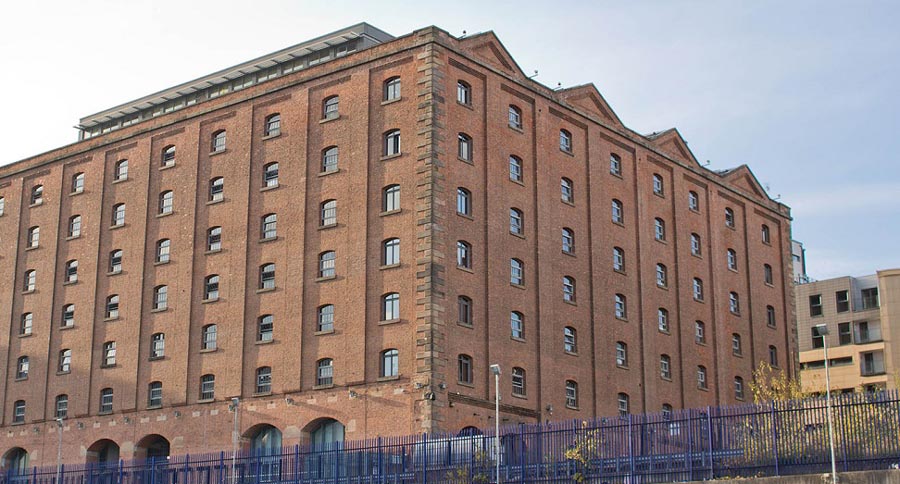 The Ducie Street Warehouse is a vast red brick building of 7 stories high, looming over the Rochdale canal basin in Manchester. It originally belonged to the Manchester, Sheffield and Lincolnshire Railway, and was used to store cotton bales shipped over from America, before they were sent down the canals to the mills of London. Manchester was specially chosen as a hub for the cotton trade because its famously damp weather conditions kept the raw cotton moist enough for milling later.
The Ducie Street Warehouse is a vast red brick building of 7 stories high, looming over the Rochdale canal basin in Manchester. It originally belonged to the Manchester, Sheffield and Lincolnshire Railway, and was used to store cotton bales shipped over from America, before they were sent down the canals to the mills of London. Manchester was specially chosen as a hub for the cotton trade because its famously damp weather conditions kept the raw cotton moist enough for milling later.
Revolutionary Hinowa TeleCrawler 13 gets first UK buyer
 Access Platform Sales has supplied the first groundbreaking Hinowa TeleCrawler 13 in the UK to access rental company Elavation.
Access Platform Sales has supplied the first groundbreaking Hinowa TeleCrawler 13 in the UK to access rental company Elavation.
The Hinowa TeleCrawler 13 is the first tracked spider platform in the world to have all-electric drive.
Access Platform Sales (APS), Hinowa's UK and Ireland authorised distributor, delivered the eco-friendly platform to Elevation's HQ in Wolverton, Milton Keynes.
Family stone company turn their skills to church and heritage sector
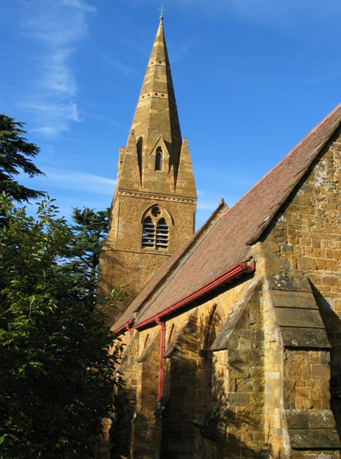 Weldon Stone are a long established and well respected stonemasonry company specialising in the repair, restoration and conservation of stone buildings both as main contractor and specialist subcontractor with over 200 years of combined experience in the field.
Weldon Stone are a long established and well respected stonemasonry company specialising in the repair, restoration and conservation of stone buildings both as main contractor and specialist subcontractor with over 200 years of combined experience in the field.
The company was founded in 1977 by father and son team Derrick and Peter Dunn at the Weldon Stone quarry near Corby in Northants and extracted the remaining rare and beautiful Weldon Stone whilst developing the stonemasonry side of the business.
Victorian church embraces modern technology
 The year is 1873, in the middle of Queen Victoria’s reign. William Gladstone is the Prime Minister of the day and Richard Benyon MP, then owner of Cranham Hall near Upminster in Essex, makes a generous offer to pay for the parish church to be rebuilt. The original parish church of All Saints’, built in the early 14th century, has fallen into a state of disrepair.
The year is 1873, in the middle of Queen Victoria’s reign. William Gladstone is the Prime Minister of the day and Richard Benyon MP, then owner of Cranham Hall near Upminster in Essex, makes a generous offer to pay for the parish church to be rebuilt. The original parish church of All Saints’, built in the early 14th century, has fallen into a state of disrepair.
Many years earlier the selling of silverware and altar equipment had funded repairs to the timber structure but on this occasion a new building was required. The medieval church was demolished just after Christmas 1873 and a new stone church erected in its place. The result was a modern and welcoming Victorian building with a warm internal appearance which remains standing strong.
Thieves increasingly targeting historic properties, warns specialist insurer
 Historic properties are being urged to take steps to prevent being victims of crime following a spate of thefts from churches and stately homes.
Historic properties are being urged to take steps to prevent being victims of crime following a spate of thefts from churches and stately homes.
According to data from Ecclesiastical’s claims team over £400,000 worth of claims have been made relating to the theft of stone since 2015. Since 2016 the figure has doubled pointing to a worrying increase.
The warnings come as the UK’s National Intelligence Unit for Serious Organised Acquisitive Crime (OPAL) reported a spate of incidents in the theft of York Stone from properties in the North of England.










